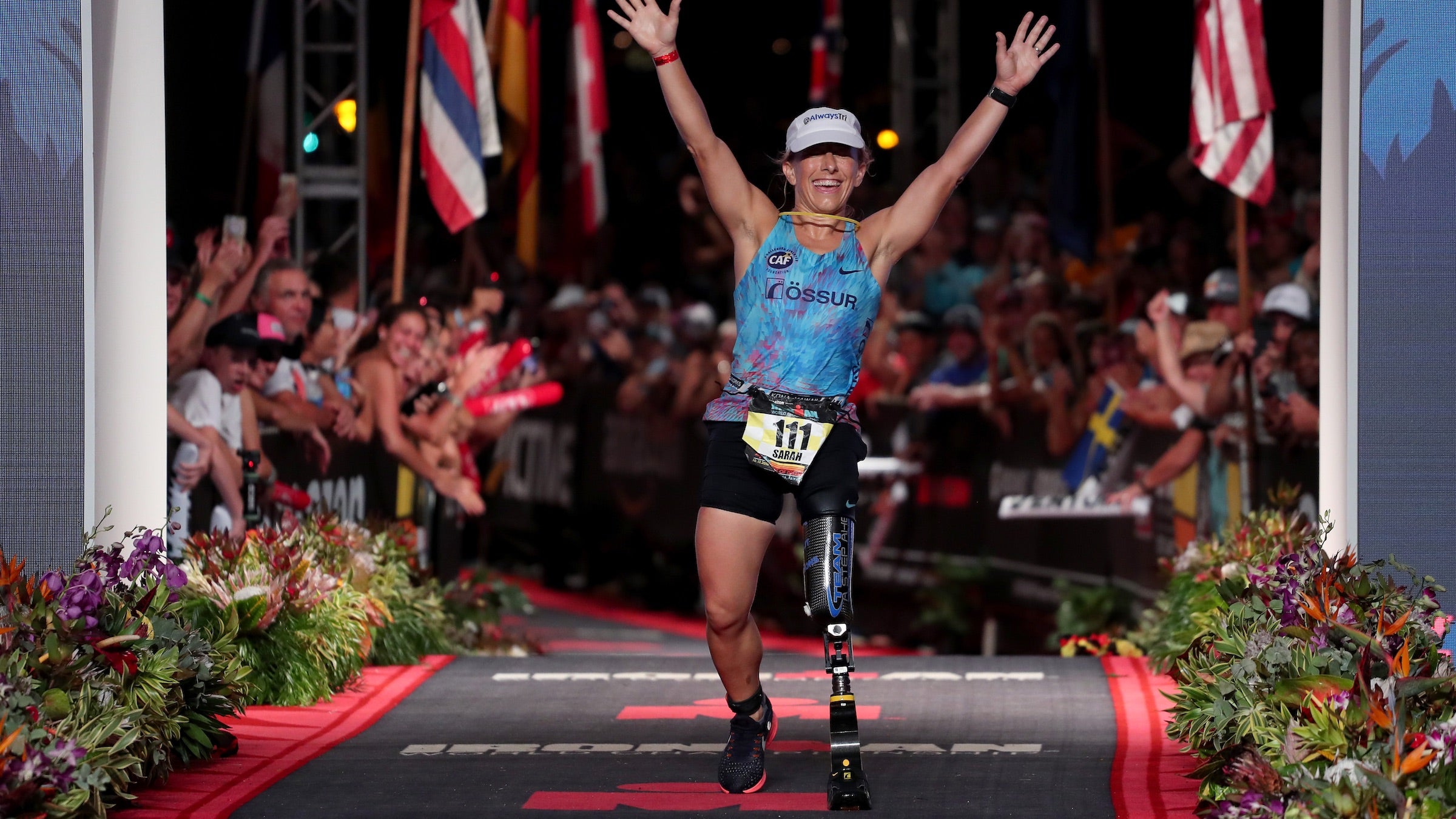Recalled: Paratriathlon Pioneers Set the Stage for Generations

Sarah Reinertsen finishes Kona in 2018. (Photo: Tom Pennington/Getty Images for IRONMAN)
While paratriathlon was only recently added to the Paralympic Games in 2016, athletes with physical disabilities have been present in the sport since the 1980s. Here’s the story of some of the earliest paratri pioneers—and how they set the stage for today’s stars.
On a steamy October day in 1994, big names like Greg Welsh, Dave Scott, and Paula Newby-Fraser battled it out at the front of the Ironman World Championships. But the standout story of the day came from back in the pack with a relative unknown named Jon Franks. When the starting cannon fired and Franks slipped into the cool, blue waters of the Pacific Ocean, he instantly made history as the first wheelchair athlete to attempt the grueling Hawaii Ironman event.
After breaking his back and becoming a paraplegic from a motorcycle accident in 1985, Franks, a chiropractor out of California, made a promise to himself that he would one day do an Ironman. “It was the hardest event I could think of,” he said in the race broadcast. “I’m making the best I can out of a bad situation.”
In Kona, Franks swam backstroke with a floatation device tucked between his legs helping to stabilize his body. While he made it out of the water before the 2 hour, 15 minute cut-off, he wasn’t so lucky on the bike. Cranking out endless rotations in the relentless heat on a hand cycle, he pulled over on the side of the road at the 111-mile mark, hanging his head as he realized he wasn’t going to make it back to transition in time.
Although Franks didn’t finish that race, he continued the momentum that began in the late 1980s when Jim McLaren, who lost his left leg below the knee after being hit by a bus, became one of the first paratriathletes to complete the Ironman World Championships (going on to finish in a record-setting 10:42:50 in 1992). After that, paratriathletes became attracted to Ironman like a magnet. In 1997, Australia’s John Maclean became the first wheelchair athlete to make it to the finish line in Kona. Then there was the fierce rivalry between Motocross star David Bailey and Carlos Moleda, a Brazilian-born former Navy SEAL. These men fanned the spark initially set by those like McLaren and Franks into a flame, ultimately creating a space in the sport for paratriathletes around the world.
Still, it took more time for the women to follow suit. In 2004, Sarah Reinertsen—then a 29-year-old from Mission Viejo, California and an above-the-knee amputee—broke hearts around the world when she tearfully accepted the abrupt end to her Kona debut after missing the bike cut-off (it was all featured on the NBC show). With a renewed spirit (and a custom Cannondale bike), Reinertsen returned the following year and completed the race, becoming the first woman with a prosthesis to finish the Ironman World Championship. (She raced again in 2018, at the age of 43, finishing over 24 minutes faster than she did 13 years prior.)
Reinersten’s gutsy efforts—and the massive amount of media attention that followed—unleashed a watershed moment for paratriathletes, especially women. (It may not be a coincidence that in 2016, U.S. women snagged four of the nine medals doled out at the Rio Paralympic Games.) That, along with the work of organizations like the Challenged Athlete Foundation, founded by triathlon legend Bob Babbitt in 1997, and USA Triathlon, as well as the inclusion of paratriathlon into the World Triathlon Championship Series in 2002, brought more and more people into the sport who may have otherwise never had the opportunity to take a shot.
RELATED: What is Paratriathlon? Understanding Triathlon in the Paralympics